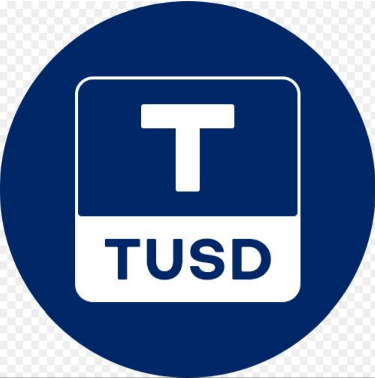One of the more interesting cases last week in the Kleros T2CR Court was the case of the TrueUSD.
The initial requester of the token posted the following logo of the TrustToken’s TrueUSD, alongside other necessary information:
The submission quickly got challenged. The challenger provided photo evidence of the landing page of the TrustToken’s website, as well as Telegram communication with TrustToken team members, pointing out that the TUSD logo looks differently (evidence here).
Furthermore, the challenger linked TrustToken’s media kit while weighing in on the issue by saying that the originally submitted logo was used once in official TrustToken communication as a promotional logotype.
The challenger’s key argument was that, according to the curated list jurisprudence, jurors favored the most up-to-date token logos, quoting the cases of Huobi and Wings.
The requester rebutted (evidence here) by providing evidence that the logo provided with the original submission was indeed correct, additionally quoting Coinmarketcap, which used the logo of the original submission.
The case was passed along to jurors, who voted in favour of the original requester.
The Appeal
After the case was appealed, raising the stakes of the case, the challenger’s side quickly got fully funded, while the requester’s side was not.
After the fact, someone funded fully the requester’s (original winner’s) side and significantly deepened the discussion.
The funder pointed out (evidence here) that when the first submission into the T2CR took place (on April 23), the only available TUSD logo was indeed the one originally posted.
He refuted the fact that the logo was temporary, as there was no concrete evidence saying that this was the case.
One day after the submission, TrustToken announced an overhaul of their logos, thus according to the standing policy, the token should be admitted into the T2CR, as it was compliant at the moment of submission.
As the official media kit did not exist at the time of the original submission, the funder refuted the argument that the logo was incorrect, indicating that a number of T2CR submissions did not use logos from official media kits.
The funder additionally quoted the policy saying that “the most commonly used logo should be used” in the absence of the official media kit, adding that in the case of Lendingblock a precedent was made, as the accepted logo did not adhere to official sources.
Because the token logo changed after it was submitted, the main argument of the funder was that it can be challenged after initial acceptance, but not before, as it is according to the guideline.
The Retort
The appellant underlined his argument (evidence here) that the logotype was indeed temporary by providing the argument of Google doodles and changing logos of the Olympics.
Concerning the date-of-submission argument, the appellant pointed out that the submitted logo was never considered official, providing evidence of the “pre-24th April 2019” official logo seen underneath, from the official media kit of TrueToken.
The Jurisprudence Conundrum
Kleros is based on the Schelling Point principle, which at its’ core should guide the jurors, if they vote anonymously, to create common focal points of agreement, as these focal points create “each person’s expectation of what the other expects him to expect to be expected to do”.
That would mean that we expect jurors to vote for the true answer because they expect others to vote for the true answer, because they expect others to vote for the true answer.
As we can see from this case, Schelling Points are not absolute and may fragment (this is already a known fact, about which you can read more here). As we can see from the evidence provided above, the T2CR has cases where both token submissions got rejected because the logos were not up to date (the Wings case and the Huobi) and Lendingblock, where the non-official logo indeed got accepted.
A very interesting explanation of what might have happened here was exponded by our Fellow, Abeer Sharma in incredible detail in our Telegram Community group.
What happened, according to him, was a very rudimentary case of hindsight bias, where jurors, in the lack of a strongly formulated policy, decided to vote in accordance with the facts that were discovered after the dispute arose, rather than relying on the state of affairs before they were picked for juror duty.
Kleros is at its’ infancy stage, with the T2CR working less than two months. Moving forward, such precedents will allow for an organic formulation of policies which will further bolster the T2CR and make it more resilient.
Cases like this one help with formulating a body of law which will become the foundation of the Kleros legal system.


